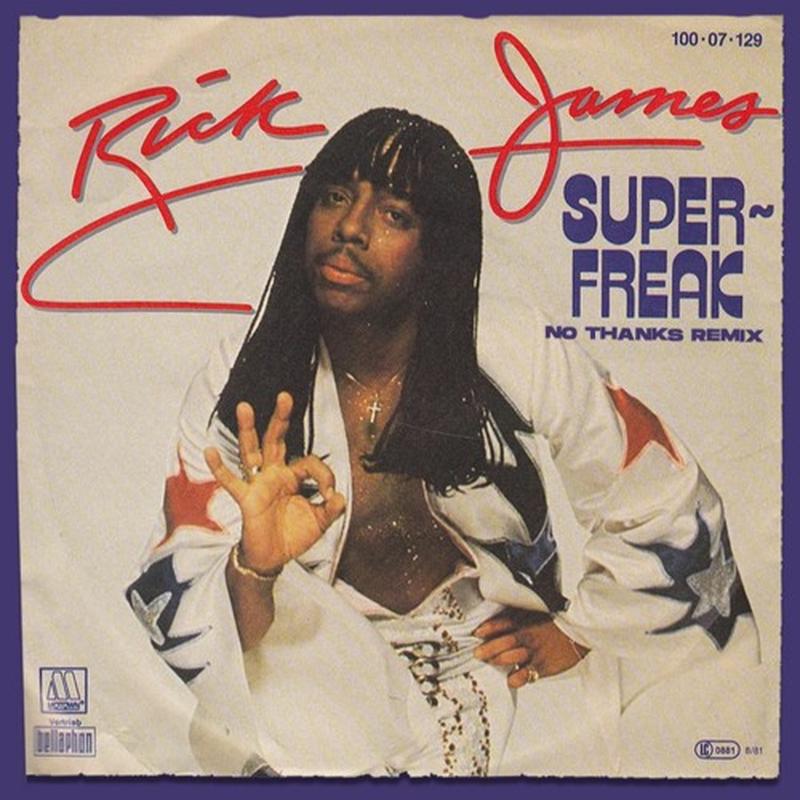The Story Of Rick James' Super Freak
By | April 20, 2022

In 1981, Rick James dropped the immortal “Super Freak,” a song that elicits a jovial reaction at a bowling alley or a Bat Mitzvah. The intervening years have managed to soften “Super Freak’s” debaucherous subject into a karaoke classic that even grandmothers enthusiastically belt out. The song easily ranks as Rick James’ biggest hit despite only reaching #16 on the Hot 100 and #3 on the R&B list.
MTV’s disinclination to play Black artists at the time undoubtedly tempered the all-time classic’s success. You might say his iconic hit represented a piece of James, who did two stints in jail and admitted to spending $8,000 a week on cocaine during the ‘80s. Here’s the story of “Super Freak.”

The Genesis Of “Super Freak”
According to James, “I wanted to write a silly song. I was in the studio and everything else for the album (Street Songs) was done. I just put 'Super Freak' together really quickly. I wanted a silly song that had a bit of new wave texture to it. So I put (sings in a deep voice) 'She's all right'; very operatic, sort of funny, stuff.”
Rick Sanchez, an engineer on “Super Freak,” remembered how James channeled another crossover legend, “Well, Rick [James] was a music fan and a history buff. He was a huge Sly Stone fan. When he came, he said, “I want to use the same people and get the same vibe as some of those Sly things.” Sly was another person who was able to take so many different musical styles and combine them into something completely different. You can hear a lot of it in some of Rick’s arrangements.”

Working From Home
At that point, James was coming off three gold-selling albums as the frontman of the Stone City Band. They were produced under Gordy Records, a subsidiary of Motown Records. However, for “Super Freak” and its accompanying album, “Street Songs” James’ worked under the Motown banner.
Sanchez detailed the studio arrangement for that iconic album, “For Street Songs, we set up a bedroom for Rick at the studio. There was a shower, a jacuzzi, and a conference room that we turned into a bedroom. It was right next to the studio. He stayed there the whole time. Sometimes he would just say, “OK, I’m going to bed. You guys do the editing. During one session, we didn’t take a break for 36 hours.”

Sly Stone And Rick James
Besides their ability to blend a variety of sounds, Sanchez saw similarities between the two musical greats. “Sly and Rick had a lot of similar personality traits, where their minds were working so quickly, and their ideas would be coming so fast, that it was hard to keep up with them. Rick would have an idea for a bassline, and then all of a sudden, a clap in that line would come into his mind. Before he would forget it, he’d want to get it onto tape. So, we pretty much had everything ready to go.”
Perhaps because of the long hours, James himself wasn’t sold on “Super Freak.” Thankfully, enough people around him, like Sanchez, talked him into it. “It’s funny, because at first, “Super Freak” was not going to go on the album. Rick said, “I don’t know if that song’s strong enough.” The band loved it, and I don’t know if it was the record company that was a little bit unsure about it. A few people came into the studio, and when they heard it, they just said, “Oh, f@#k. That is f@$King great.”

An MTV Miss
While “Super Freak” turned into an emblematic anthem for the ages, MTV ignored it and essentially all other Black artists at the time. It wasn’t until Michael Jackson’s “Thriller” that African American artists received consistent airtime. According to Sanchez that stung,
“During the time when MTV wasn’t playing any Rick James music, which was ridiculous because he would have been great on MTV. He loved being in front of a camera. I know that he was very pissed off about that and rightfully so. He never got the boost that exposure would have given him. I think that led him into a little bit of a downward spiral. It was really hard on him. He really wanted to be the first big Black artist on MTV.”
For her part, Carolyn Baker, Director of Acquisitions, gave her understandable reasoning. "It wasn't MTV that turned down 'Super Freak.' It was me. I turned it down. You know why? Because there were half-naked women in it, and it was a piece of crap. As a black woman, I did not want that representing my people as the first black video on MTV.” Nevertheless, the funky “Super Freak” still evokes joy wherever it’s heard.
